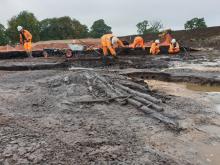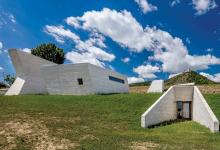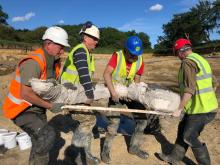The uncovering of extensive archaeological remains at CEMEX UK’s Langley Quarry, county Berkshire, England, continues. The most recent investigations have uncovered a rare monument known as a ‘causewayed enclosure’, built in the Early Neolithic period between 3,800 and 3,500 BC. Less than 100 causewayed enclosures are known to be in Britain, mostly across southern England. The causewayed enclosure at Datchet is only the second known example of the monument in east Berkshire, although the other lies
August 22, 2018
Read time: 1 min

Recent archaeological work at Langley Quarry in county Berkshire, England, has uncovered a rare monument known as a ‘causewayed enclosure’, built in the Early Neolithic period between 3,800 and 3,500 BC pic: CEMEX UK
The uncovering of extensive archaeological remains at 6156 CEMEX UK’s Langley Quarry, county Berkshire, England, continues.
The most recent investigations have uncovered a rare monument known as a ‘causewayed enclosure’, built in the Early Neolithic period between 3,800 and 3,500 BC.
Less than 100 causewayed enclosures are known to be in Britain, mostly across southern England. The causewayed enclosure at Datchet is only the second known example of the monument in east Berkshire, although the other lies nearby at Eton Wick.
Remarkably there are also two other examples known in this part of the Thames Valley at Dorney and at Staines (more-or-less under Junction 13 of the M25).
The former has never been subject to archaeological investigation while the latter was subject to ‘rescue’ excavation in the 1960s prior to gravel extraction.










